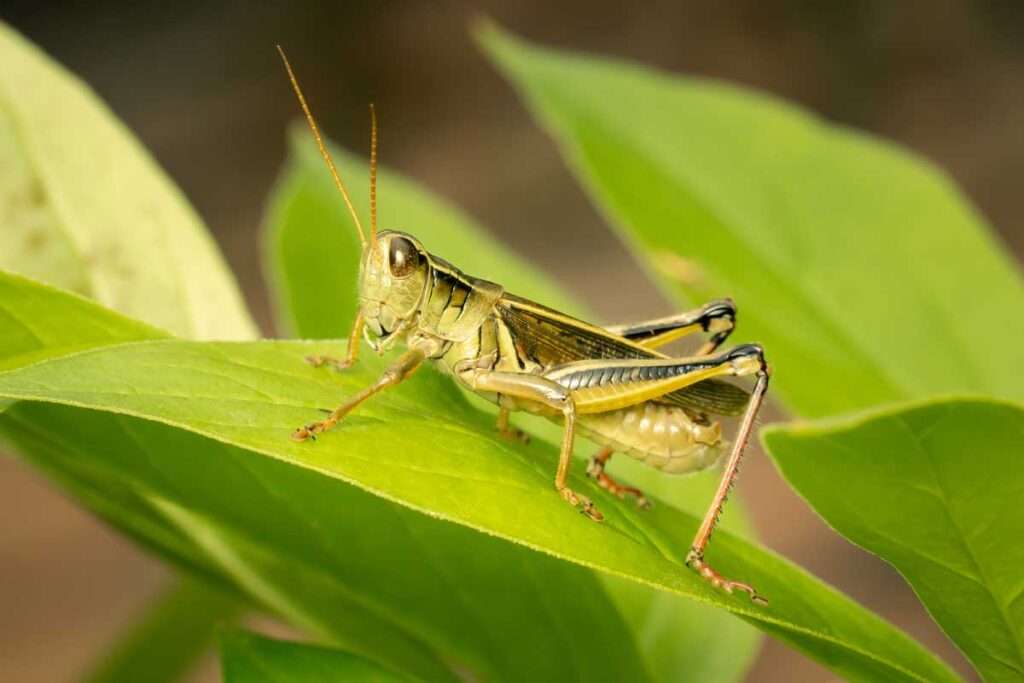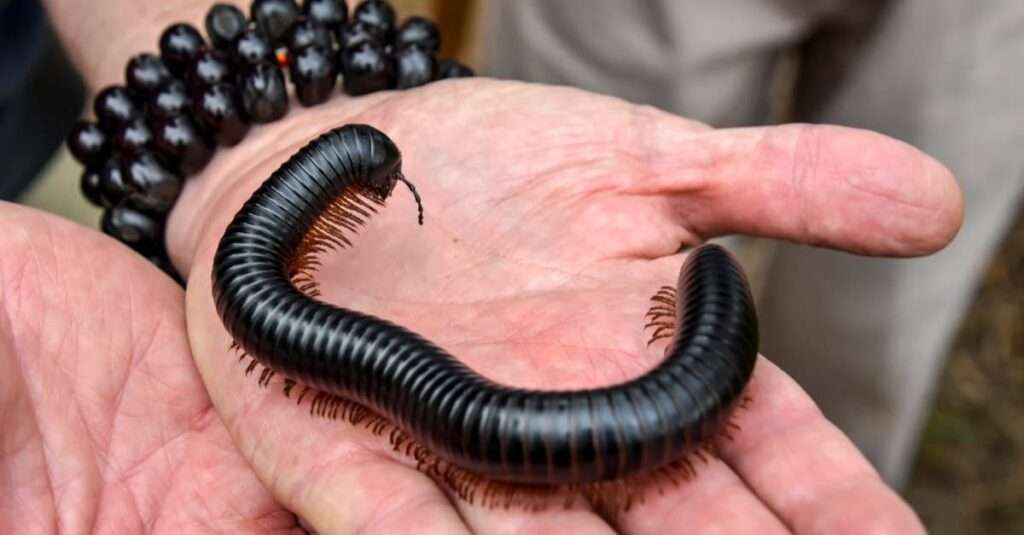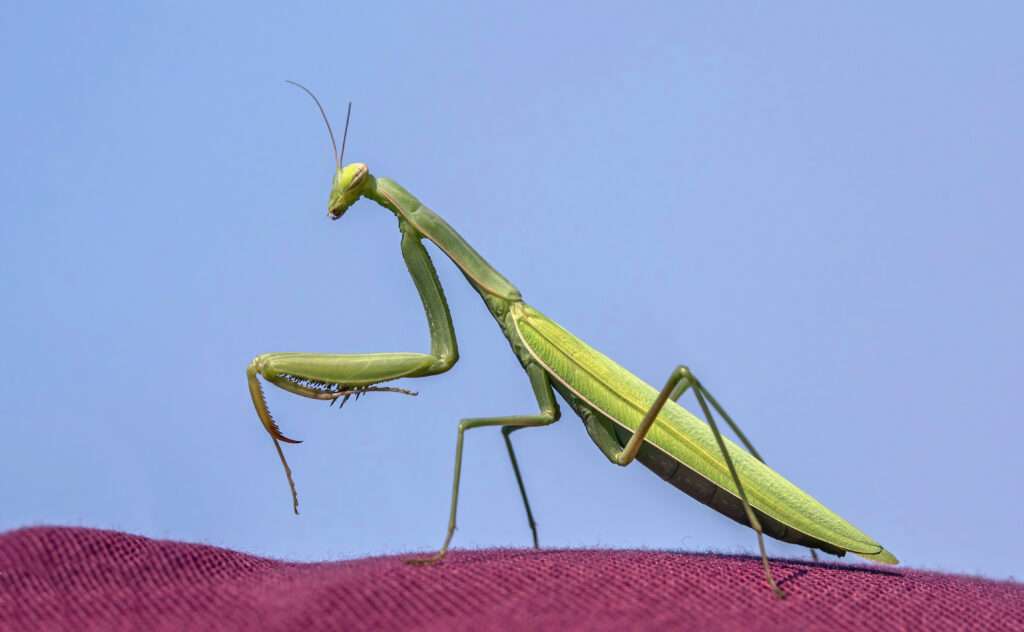
Ground-dwelling grasshoppers go through five molts before becoming adults. They have compound eyes that can change color and behavior according to the surrounding environment and can detect light intensity. Grasshoppers are plant-eating insects that, if they swarm, can be a significant pest. They defend themselves by disguising themselves and startling predators with a burst of vivid color.
Grasshoppers are utilized as food in nations like Mexico and Indonesia and are infected with parasites and a number of diseases.
Traits
- Grasshoppers have three pairs of legs, two pairs of wings, a head, a thorax, and an abdomen. The powerful hind leg has many ridges where various surfaces meet, and the inner ridges have stridulatory pegs.
- The first segment of the grasshopper, which is united to the thorax and houses the tympanal organ and hearing apparatus, has eleven segments in total. The grasshopper creates noises to entice females and has short ovipositors.
- Grasshoppers and crickets differ from each other in a variety of ways, including the number of antennal segments and the design of the ovipositor.

Habitat
Except for Antarctica, all continents are home to grasshoppers. About 50 of the known 10,000 species of grasshoppers are present in Michigan.
Grasshoppers are members of the suborder Caelifera of the insect order Orthoptera. Nearly every type of habitat, including the tropics, temperate grasslands, rainforests, deserts, and mountains, supports grasshopper populations.
Food Habits
The majority of grasshoppers are polyphagous, which means they consume plants from many sources, but others are omnivorous and also consume animal tissue and faeces. In general their preference is for grasses, including many cereals planted as crops.
Defensive Behavior
In order to hide from predators, grasshoppers frequently adopt camouflage, and some species have alarming patterns on their wings. Some species actually have bright warning colors and enough toxicity to deter predators, making them aposematic.
Care this Bug as Pet
- Get a terrarium made of glass or plastic. A clear glass terrarium is a fantastic place to keep grasshoppers because the owner will probably want to see it in action. Make sure the terrarium has a plastic or metal mesh covering to cover the top and that it is big enough for a single grasshopper to have some space to wander around.
- Think about how big your grasshopper is. According to estimates, there are over 10,000 species of grasshoppers on the earth, and their mature sizes range from 0.39 inches (1 cm) to 2.76 inches (7 cm). Since a grasshopper, which is what this bug is most likely, belongs to the same species as these, it should grow to a similar size.
- A person who own grasshoppers can add dry sand, dried oatmeal flakes, or even dry coconut fibers to the bottom of the terrarium. Your grasshopper will feel more comfortable in the terrarium as a result. To ensure that the grasshopper has enough room, only fill it up by an inch or two. So that your grasshopper has a place to perch and can jump from twig to twig, add some twigs and sticks to the terrarium.
- Make sure that the terrarium receives some light. Grasshoppers require a warm, dry environment to survive. The ideal temperature for a grasshopper’s home throughout the day is between 77 °F (25 °C) and 95 °F (35 Celsius). The owner just placing a lightbulb inside the terrarium during the day can accomplish this.
Species
More than 8,000 different species of grasshoppers and locusts, found all over the world, are members of the Acrididae family.
- Red-legged grasshopper
- Eastern lubber grasshopper
- Two-striped grasshopper
- Differential grasshopper
- Pallid-winged grasshopper
- American bird grasshopper
Table





